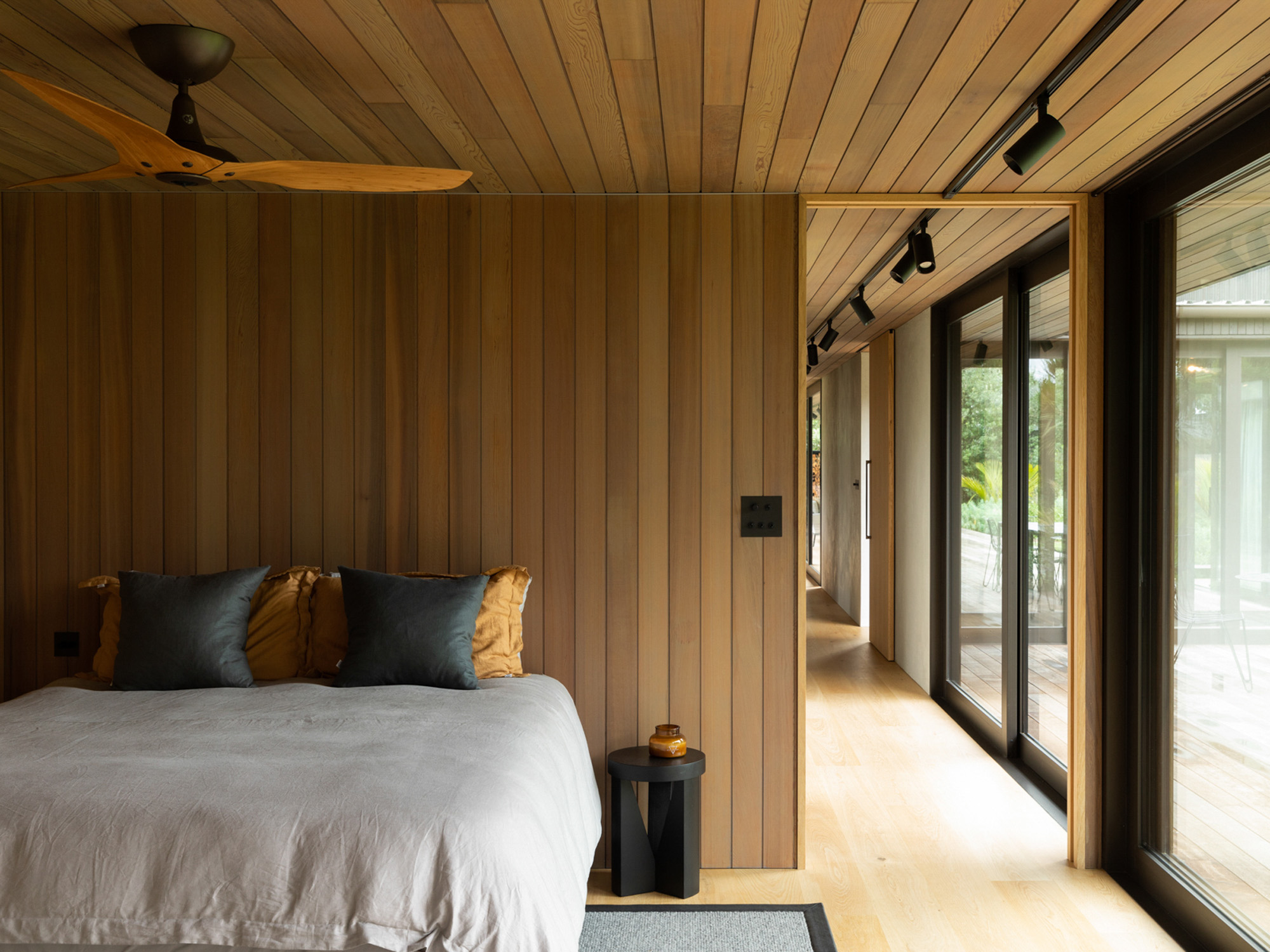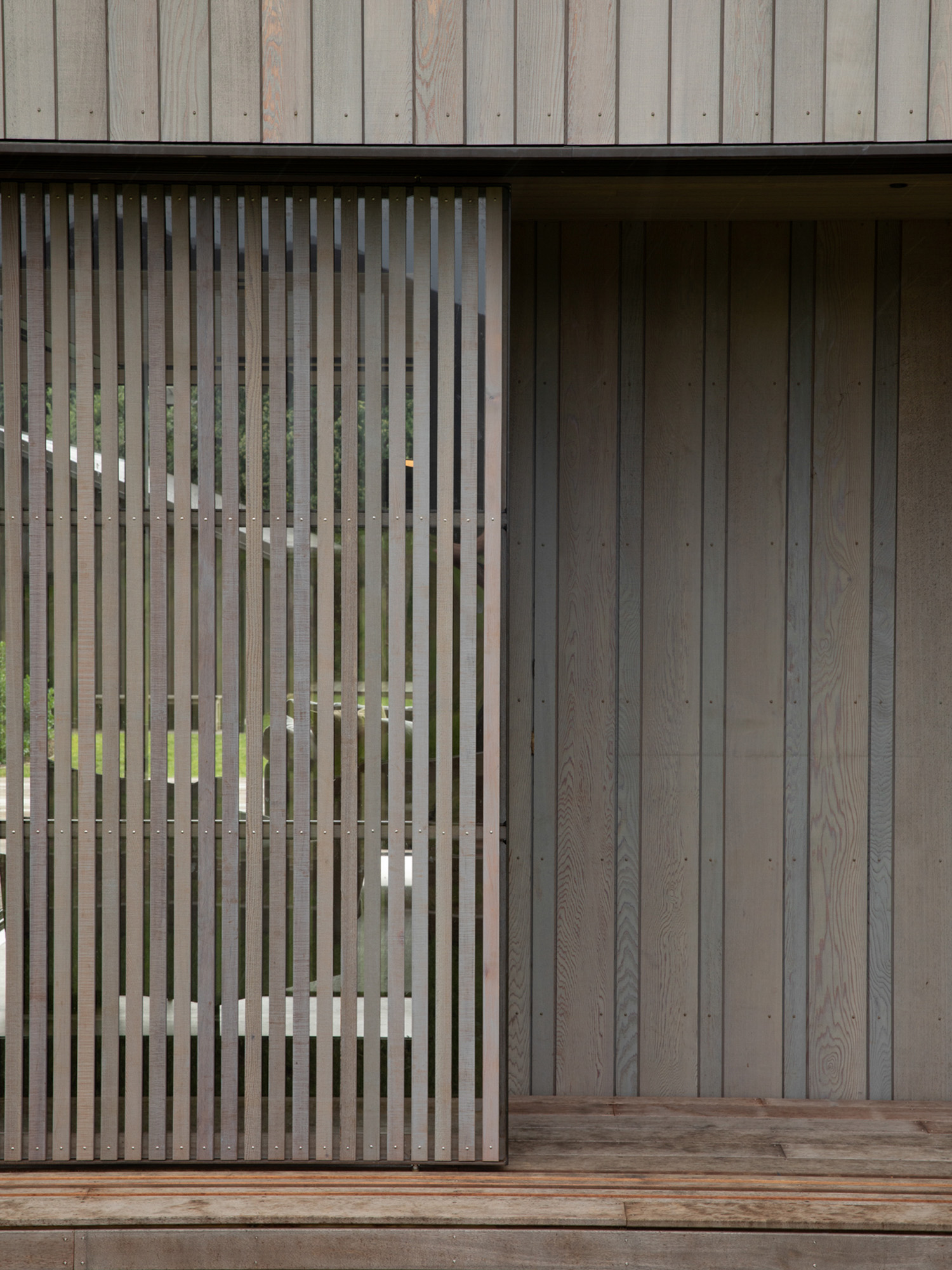On the islands surrounding Auckland, there’s a remarkable sense of stillness – a feeling of being far removed from the hustle and bustle of city life. There’s distinctive flora and fauna, and the omnipresent sound of the waves rolling onto sandy beaches that meet native bush.

It is on land such as this that feels almost untouched where architect Jeremy Chapman of JCA Studio got to work on the drawing board designing a home of nuanced connections – united by colour and materiality.
Here on Great Barrier Island, the colours of the landscape are at once muted and vibrant. There’s a sense of permanence in the rocks and native bush, and a transience with the wetlands, ebb and flow of the tides and the dunes.

Clad in cedar, this house is devised as a sum of connected parts. The cedar is used in several different formats, the differentiation is subtle as are the tonal changes. The central wing of this bach housing the living area and three bedrooms is oiled with Dryden Slate, a sandy tone that works in perfect harmony with the hues of the wetland and coastal dunes.
To differentiate the two-storeyed part of the structure, it is oiled with Dryden Midnight, alluding to the dark rock present in the wider surrounds, and specifically the well known rock on local Medlands Beach from which this house takes its name – Memory Rock.
As Jeremy puts it: “The striation of a beach is the metaphor we used for material and colour … if there was any confusion we’d go back to the metaphor”.




